When Bryan Kong, Now Now’s director of fermentation, invited me to participate in a week-long series of taste tests, the restaurant was in the thick of its final preparations prior to opening. During this frantic periodtusk casino, I experienced the ins and outs of the ambitious contemporary canteen and fermentation lab and pick the brains of its founders—a Polish-Filipino couple blending fast food convenience with the complexity and mindfulness of slow food.
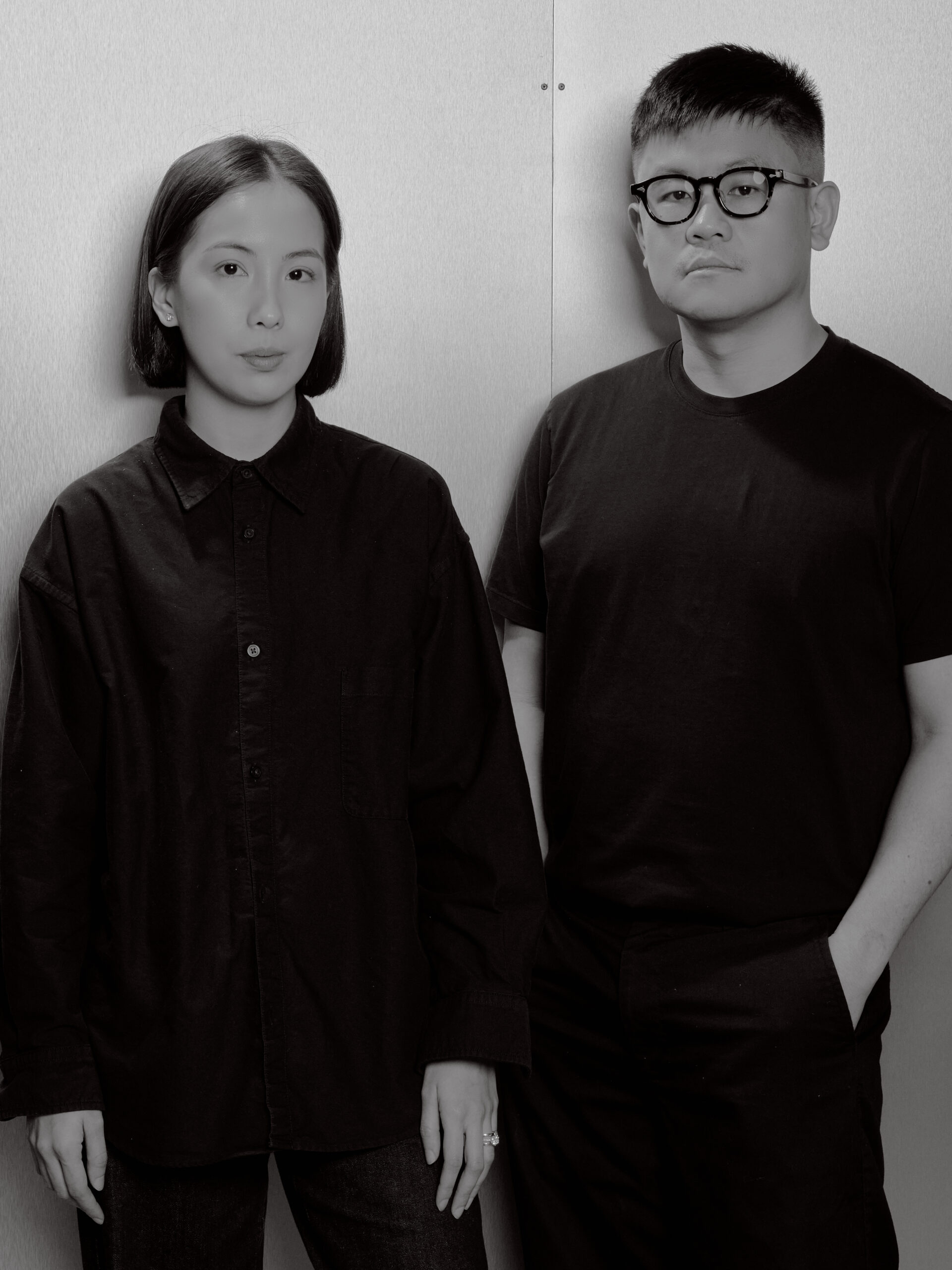 Now Now CEO Maxine Kong and Now Now Director of Fermentation Bryan Kong. Photo by Renzo Navarro
Now Now CEO Maxine Kong and Now Now Director of Fermentation Bryan Kong. Photo by Renzo Navarro
Their goal is bold and straightforward: to offer delicious, high-quality food at prices that won’t break the bank while redefining the local food scene. By zeroing in on locavorism and fermentation, Now Now’s Polish executive chef Mateusz Łuczaj, Warsaw-based Filipina executive pastry chef Lisane Łuczaj, director of fermentation Bryan Kong, and CEO Maxine Kong, all envisioned a contemporary restaurant with a countercultural response to fast food joints that serve nothing but empty calories. “There has to be a change, a shift in the trajectory of global food culture. We should focus on food as sustenance while making the food that we eat exciting. In Now Now, we serve you the food that you want fast because we have prepared the food a week in advance,” says Mateusz, who isn’t only the F&B director but also a lecturer at the University of Economics and Human Sciences in Warsaw and former ‘MasterChef Polska’ finalist.
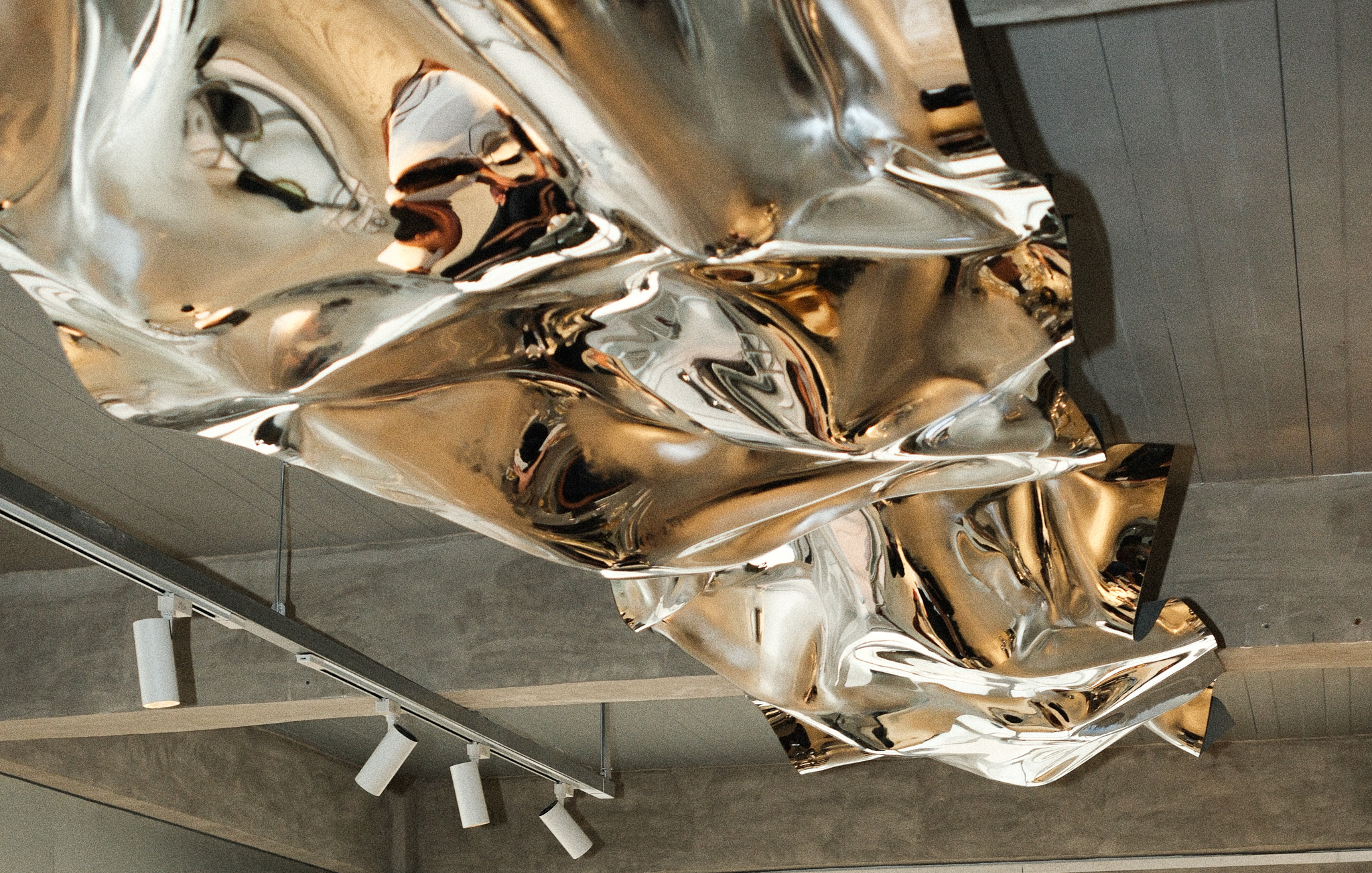 Chino Yulo’s overhanging sculpture of an oceanic wave pays homage to the multicultural identities and transnational journeys of Now Now’s four founders. Photo by Marco Lazaro
Chino Yulo’s overhanging sculpture of an oceanic wave pays homage to the multicultural identities and transnational journeys of Now Now’s four founders. Photo by Marco Lazaro
From the restaurant’s stark brutalist walls and the striking metal oceanic wave sculpture by Chino Yulo to the meticulously curated floral installation by Paraluman Flora and the haunting haiku by Matsuo Bashō inscribed on the frosted windows, it’s evident that every design element, ingredient, process, and idea had been thoughtfully curated to embody Now Now’s vision of an introspective yet forward-looking dining experience. Having traveled from Poland to Manila for Now Now’s launch, Mateusz and Lisane discuss their culinary journey as a couple and what inspired them to open a bold and ambitious restaurant in Manila.
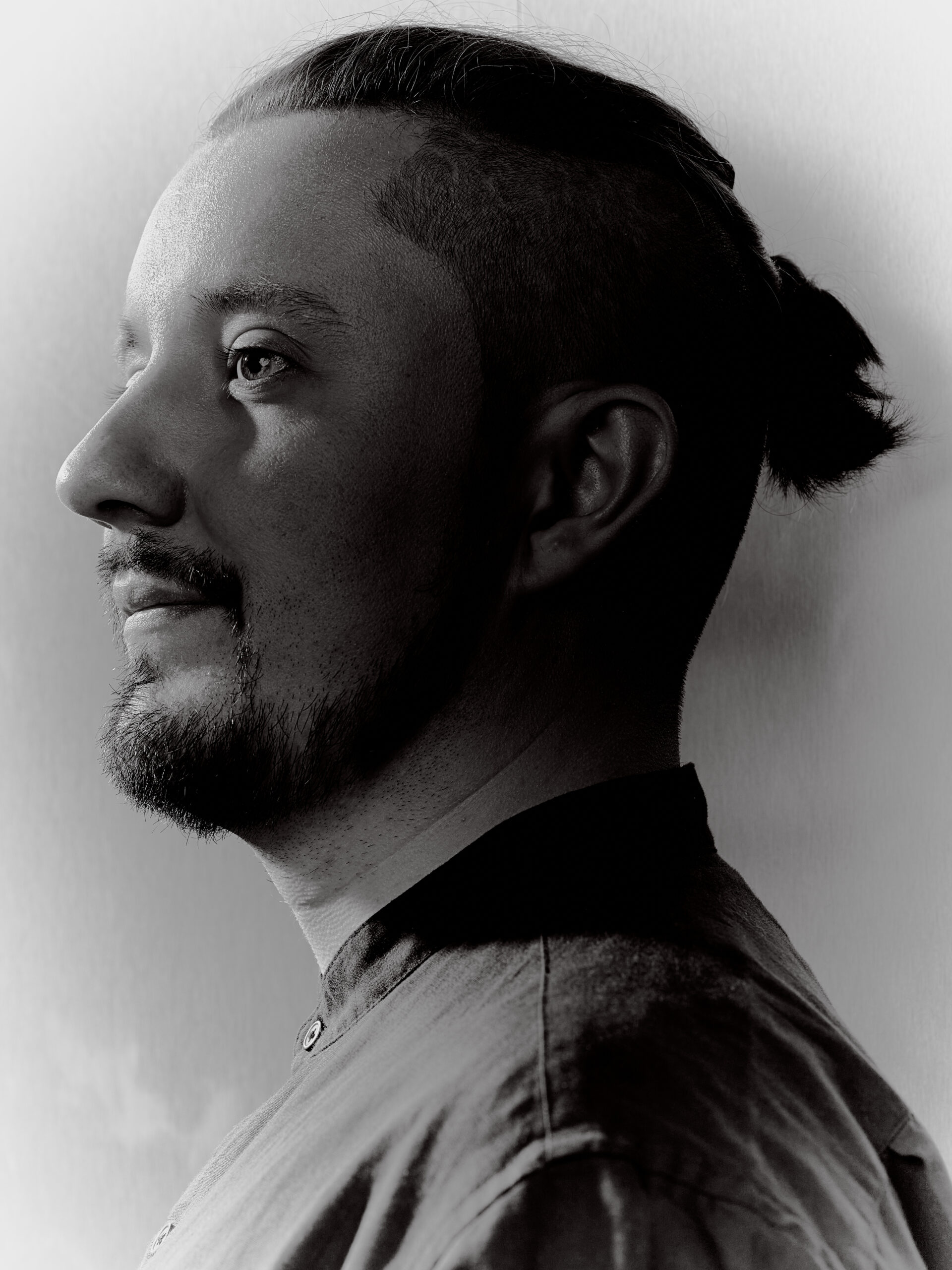 Mateusz Łuczaj, Now Now Executive Chef. Photo by Renzo Navarro
Mateusz Łuczaj, Now Now Executive Chef. Photo by Renzo Navarro
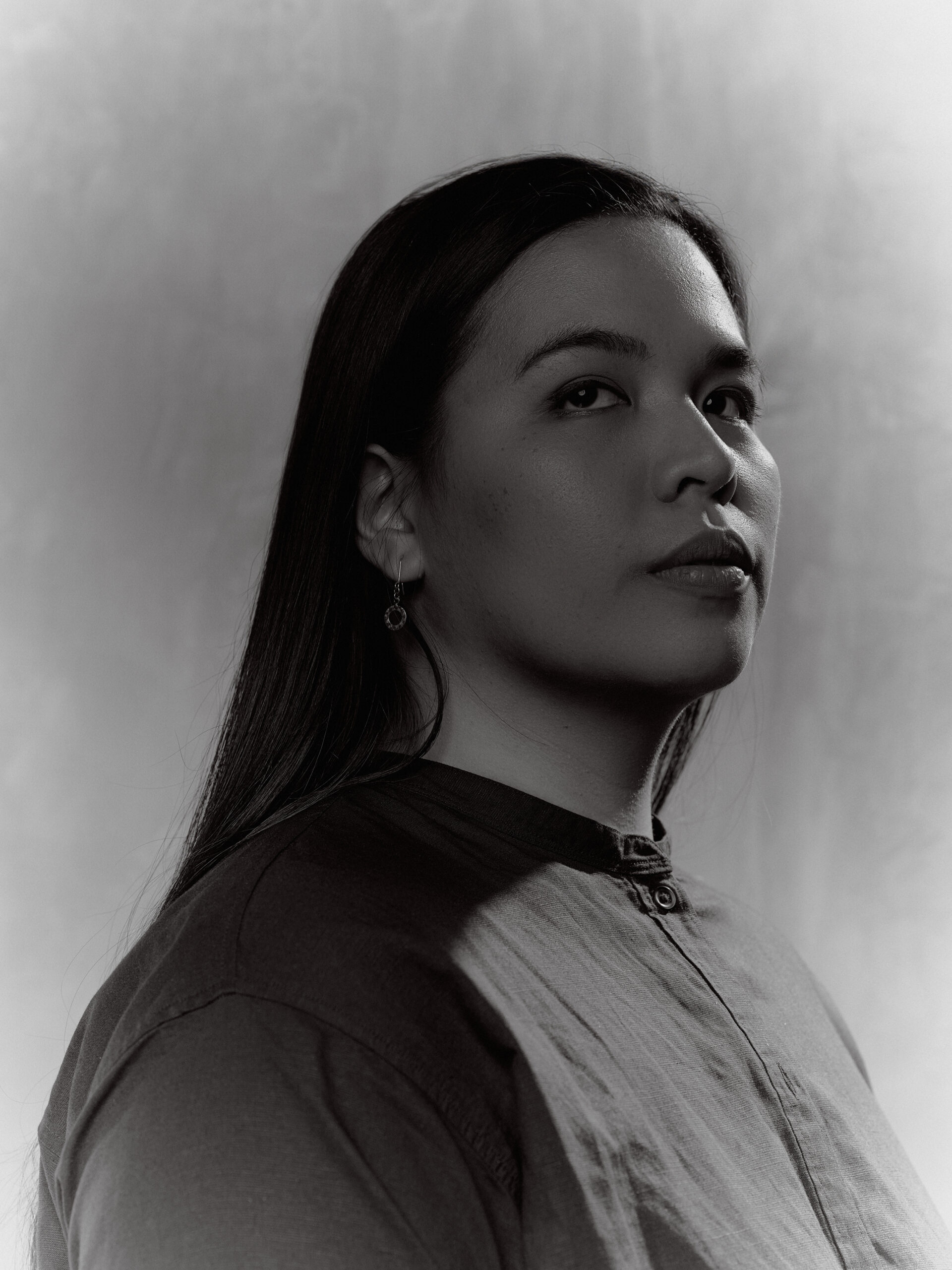 Lisane Łuczaj, Now Now Executive Pastry Chef. Photo by Renzo Navarro
Coming from two different countries, cultures, and culinary experiences, can you share the ebb and flow of your respective culinary journeys?
Lisane Łuczaj, Now Now Executive Pastry Chef. Photo by Renzo Navarro
Coming from two different countries, cultures, and culinary experiences, can you share the ebb and flow of your respective culinary journeys?
Mateusz Łuczaj (ML): Growing up in Poland, I remember cooking full meals for my family even as a child. One day, I came across a chemistry book that inspired my deep love for gastronomy. For me, chemistry and gastronomy exist in a continuum. I have always loved looking into the science of food. My passion for the science of gastronomy led me to join ‘MasterChef Polska.’ My travels with my parents across the Middle East and North Africa also deeply influenced my love for food. I still remember my time in Egypt and Jordan and how my parents allowed me to expand my understanding of food, culture, and music.
Lisane Łuczaj (LL): My father, a geologist who collaborated closely with Japanese businessmen, opened a Japanese restaurant along Katipunan. I fondly remember peering through the kitchen curtain, inhaling the rich aroma of Japanese dishes being prepared, and watching the chef work his magic. This early exposure to Japanese cuisine in a restaurant setting ignited my passion for East Asian cuisine and the culinary arts. However, my family’s background—my father being a scientist and my mother a doctor—made it clear that a career in the arts, including being a pastry chef, was simply not an option. I ended up taking medicine at university. The thought of becoming a doctor made me deeply unhappy. Realizing that I needed to make a significant change to find my own happiness, I decided to fly to Europe and study at Le Cordon Bleu in Madrid. The rest, as they say, is history.
What are your respective culinary philosophies?ML: My culinary philosophy revolves around the science of cooking. When we learn the processes—how everything works from a chemical level—we won’t be afraid to make things wrong. This is precisely what we are embodying here in Now Now. We learn processes, we learn the science of gastronomy, we take fermentation seriously, and we prepare our ingredients days and weeks in advance, but we aren’t afraid of doing things wrong. The truth is, if you aren’t afraid of doing things wrong, you may end up creating something unique and spectacular.
LL: One, food should still be food, and two, food should elicit some happiness within us. Unlike Mateusz, my philosophy is a little less technical, perhaps more emotional and sentimental. I’m interested in how food can make us feel things, give us new experiences, and make us feel truly happy in the moment.
ML: You sound like you’re paraphrasing a lot from the movie ‘Ratatouille.’
LL: I’m a Disney girl.
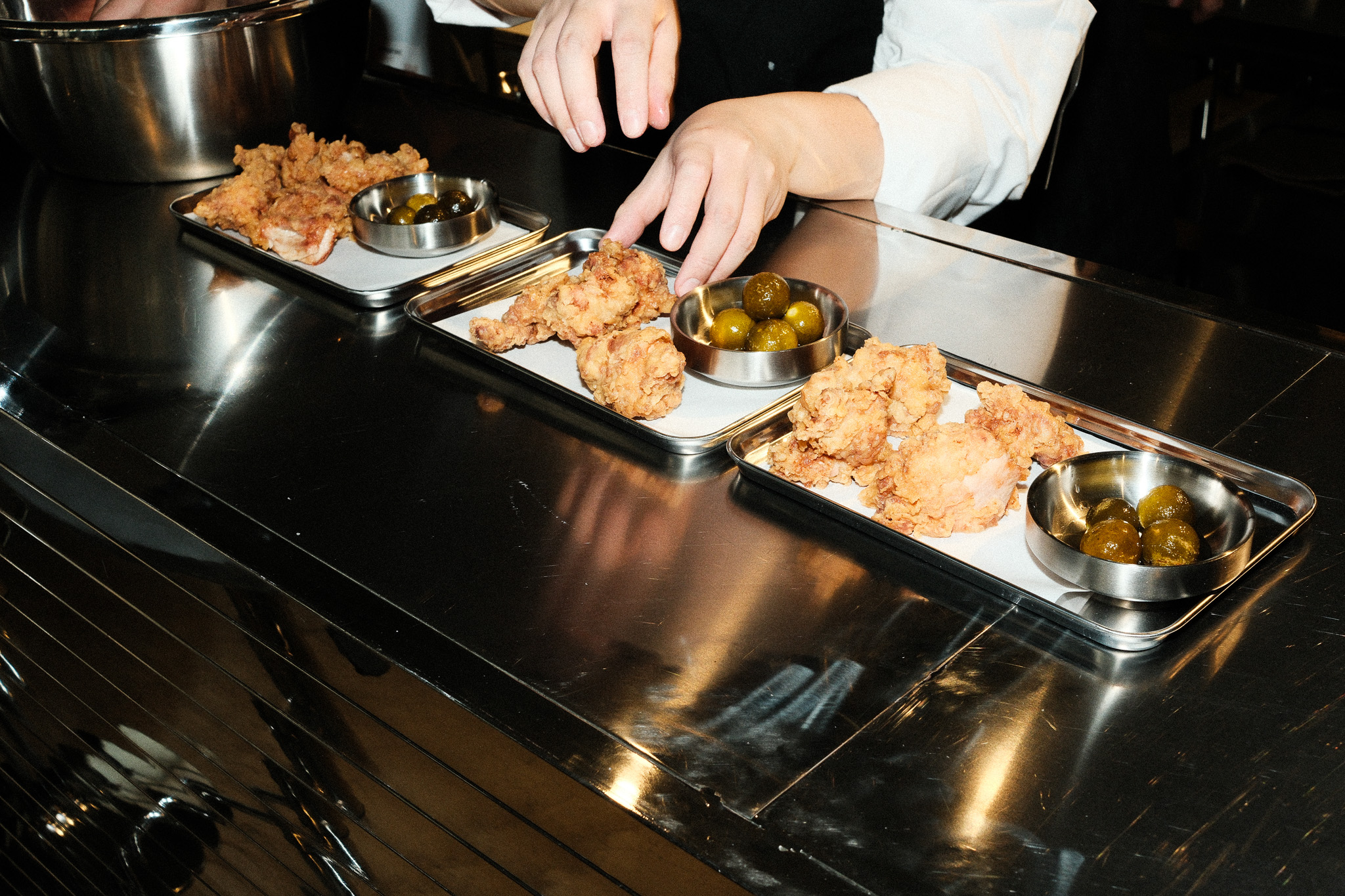 Fermented ingredients are an integral part of Now Now’s dishes. Photo by Marco Lazaro
As a Polish chef with Tartar and Slavic roots, in what ways do you lean into your cultural identity as a chef, culinary consultant, and restaurateur?
Fermented ingredients are an integral part of Now Now’s dishes. Photo by Marco Lazaro
As a Polish chef with Tartar and Slavic roots, in what ways do you lean into your cultural identity as a chef, culinary consultant, and restaurateur?
ML: What I take most from my Polish identity is the Polish fixation on hospitality. In Poland, hospitality is everything. It is such an important aspect of Polish identity. It is the number one thing in terms of hosting. An experience dining in a restaurant should feel like dining at a friend’s home. I think about the warmth of home when coming up with dining concepts. Just like what Lisane mentioned about food being a vehicle for happiness and joy, Polish culinary philosophy values the joy of home.
Another key component that I take from my Polish cultural heritage is fermentation. We heavily use fermentation techniques in Now Now. We just received a grant from the University of Economic and Human Sciences for the study of the benefits of fermented food in daily life.
How about you, Lisane?LL: As a Filipina and Asian living in Europe, I take it upon myself to “microdose” the European consumers with Filipino pastries and desserts. I say microdose because the common European doesn’t have much of an idea about Filipino cuisine. I want Filipino cuisine to have a seat at the table so to speak. I believe in representation in life and in the culinary world. As much as I can, I insert Filipino flavors and pastries into my concepts. Asian representation overall is important but Chinese, Japanese, and Korean food are already mainstream around the world. I want Filipino food to have its moment in Europe.
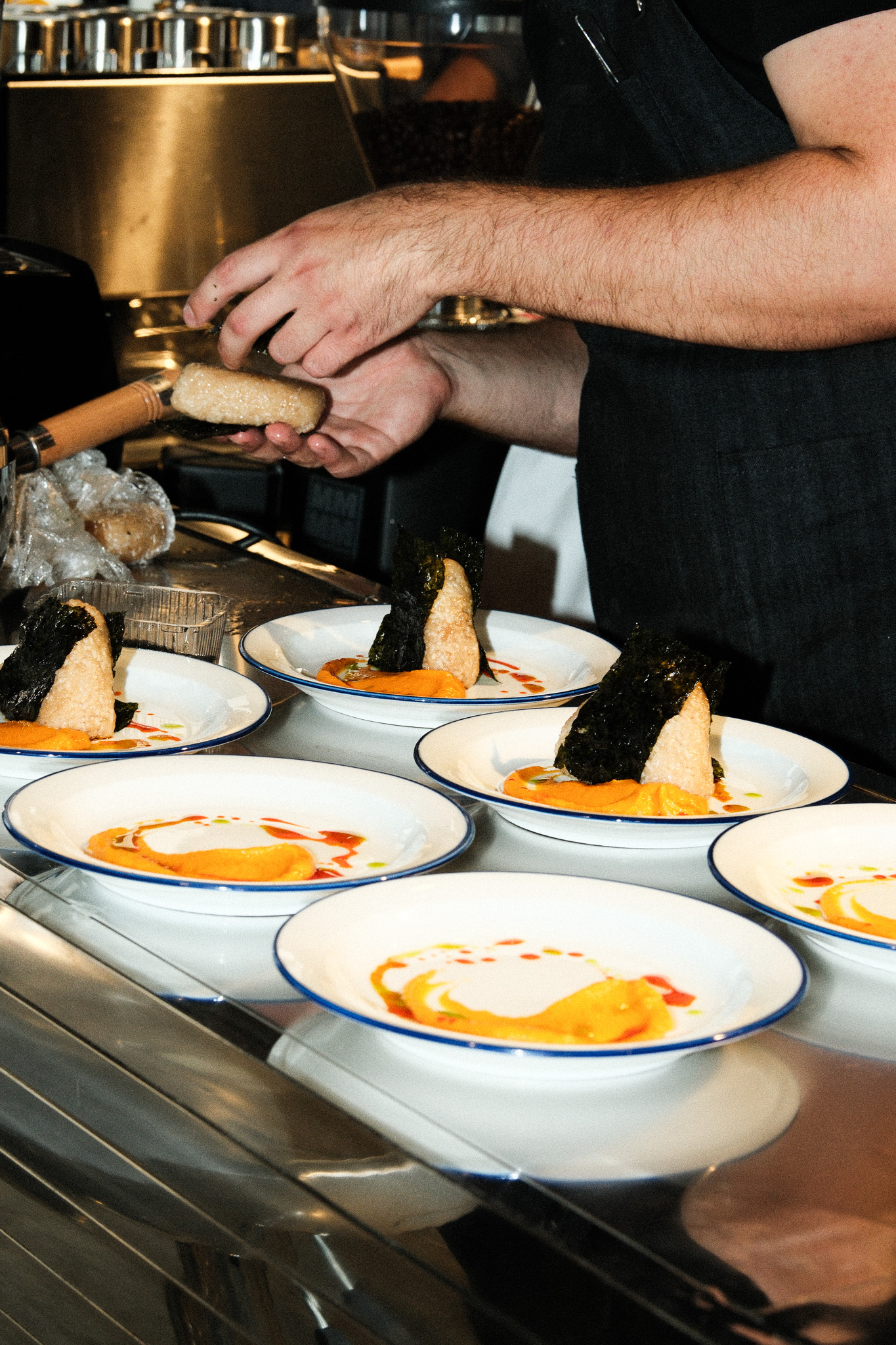 Assembly line of Now Now’s machang with fermented papaya chutney. Photo by Marco Lazaro
Assembly line of Now Now’s machang with fermented papaya chutney. Photo by Marco Lazaro
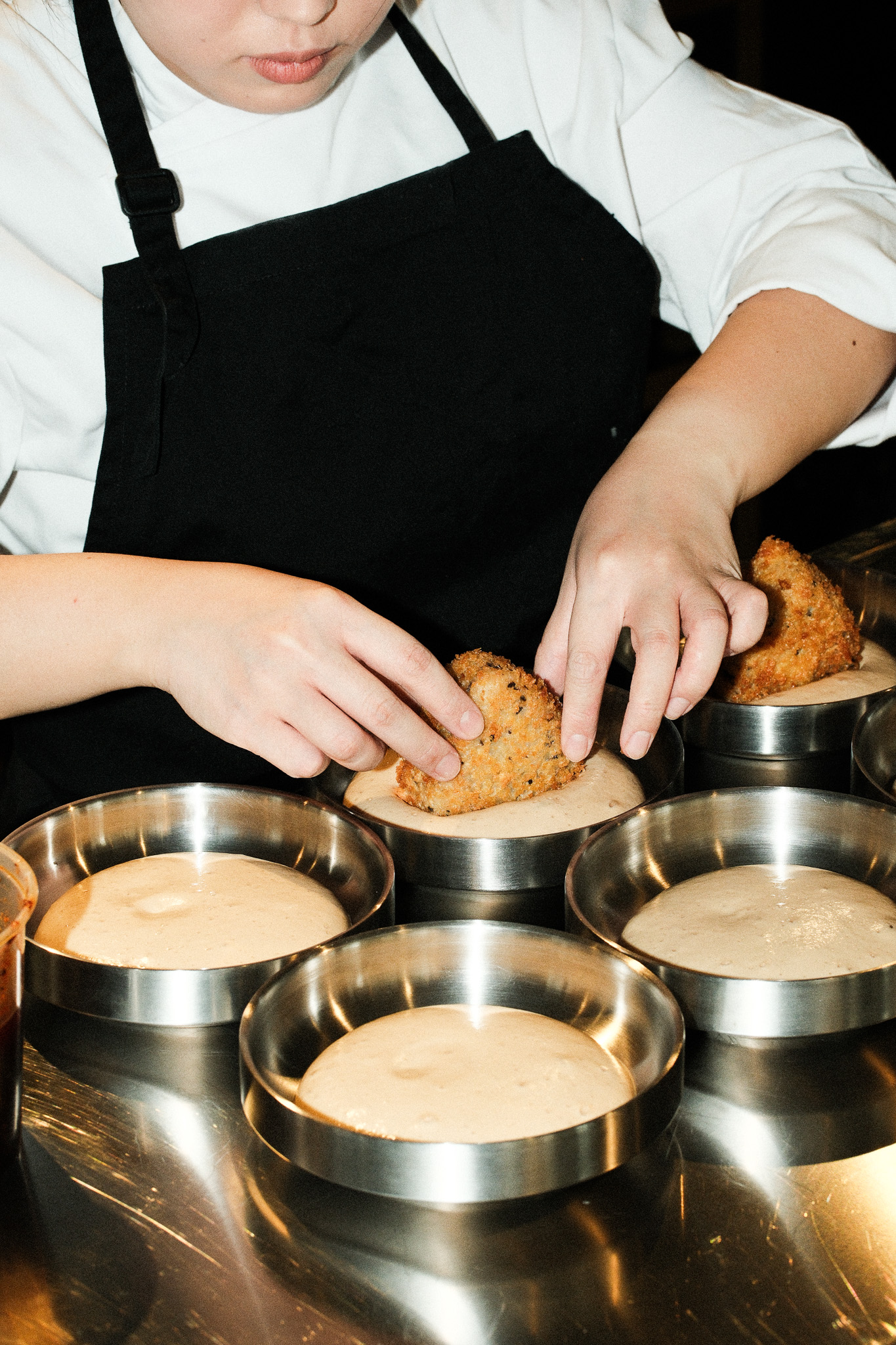 Now Now’s arancini on burnt onion foam. Photo by Marco Lazaro
Being married to Lisane, how is it like to bridge cultural, creative, and personal differences?
Now Now’s arancini on burnt onion foam. Photo by Marco Lazaro
Being married to Lisane, how is it like to bridge cultural, creative, and personal differences?
ML: On the surface, it seems like there are more differences than similarities between me and Lisane. But having studied world history and cultures, I have come to the conclusion that Poland and the Philippines share more similarities than differences. Warsaw and Manila were the two most heavily bombed Allied cities during World War II. Both our countries are heavily Catholic. Both our countries had to endure long periods of invasion/colonial rule. The Philippines and Poland both value hospitality. In terms of food, we use fermentation techniques a lot, while pickling techniques are widely used in the Philippines even before colonialism. In terms of values, I don’t see much difference between me and Lisane.
One glaring difference though is the Philippines’ extreme love for sweet food. In Poland, we don’t have this fixation over sweetness. Maybe another difference between Polish and Filipino food culture is the use of color in food presentation. I notice Lisane using less vivid, vibrant, and contrasting colors in her food. I noticed early on her preference for more subtle color combinations. The Slavic influence in Polish culture is perhaps one of the reasons why I love using vivid colors in my food presentations. All in all, I think our differences are more creative and personal rather than cultural.
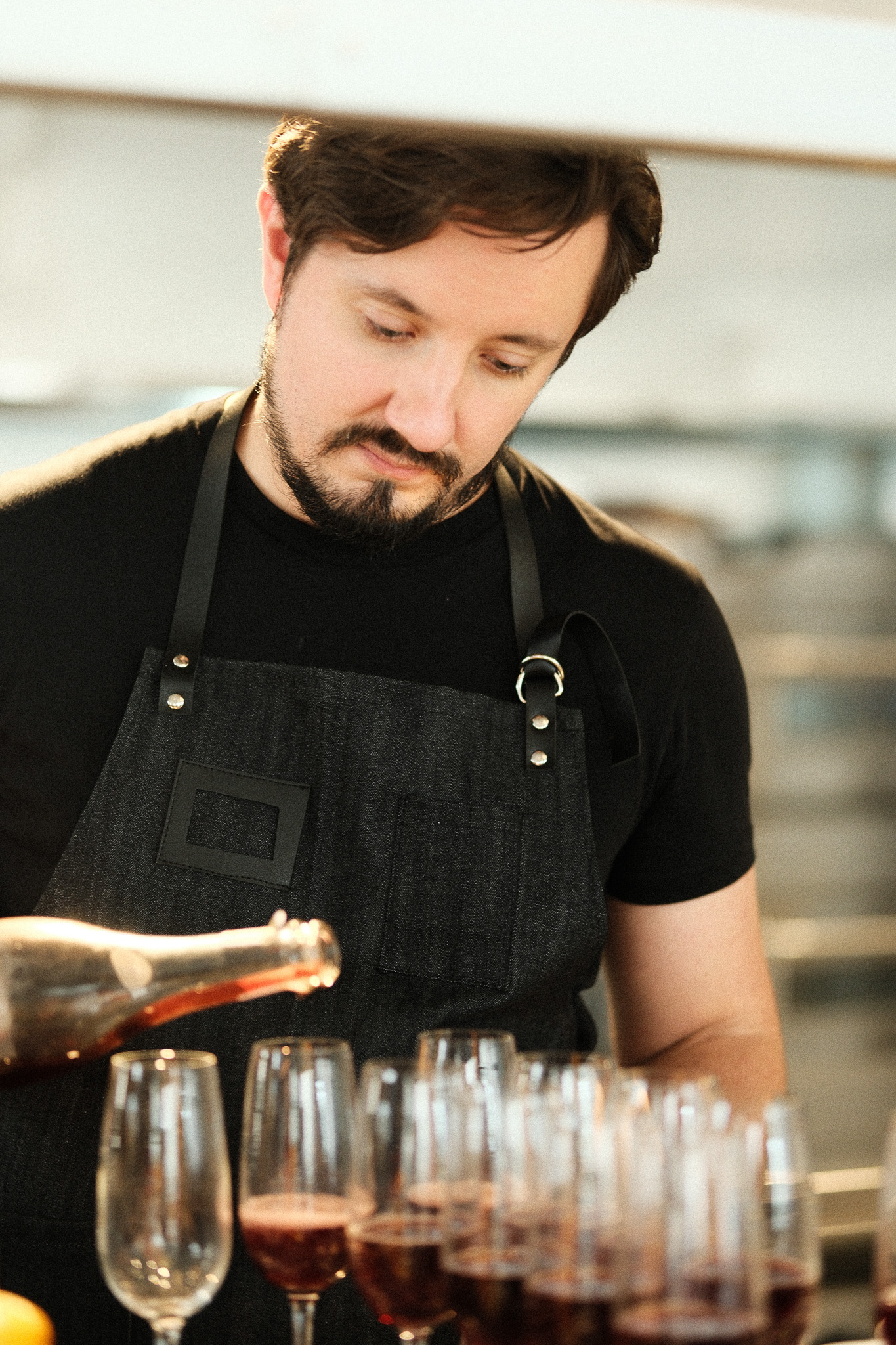 Now Now offers wine pairings to accompany their Polish-Filipino-Japanese dishes. Photo by Marco Lazaro
Now Now offers wine pairings to accompany their Polish-Filipino-Japanese dishes. Photo by Marco Lazaro
 The couple in the kitchen. Photo by Marco Lazaro
The couple in the kitchen. Photo by Marco Lazaro
LL: The main difference between Mateusz and me lies in our approach in solving problems in the kitchen. He is very full force while I subscribe to the wisdom of being slow yet sure. I like placing myself in other people’s shoes. Mateusz is very brilliant and I oftentimes try to see things from his point of view. I love his logical and systematic approach to things. He is, in fact, so brilliant that he ends up fixing my problems in the kitchen. There was this one time he fixed my failed bread. I wanted to find my own solution and fix it myself. I’m the type who doesn’t mind putting in the extra work just to find a solution no matter how slow the process is. I remember Mateusz once told me that one must strike a balance between receiving help and finding one’s own solution to a problem so as not to kill the creative process. Working with my husband entails finding this delicate balance at work and at home. Truth is, we clash and collaborate! In terms of cultural differences, I feel that there aren’t many. The Philippines and Poland share one too many things in common. I have to say that I do notice their love for fermentation. Polish people are really serious about their fermentation processes.
Your composed presence stands in stark contrast to the temperamental and militaristic head chefs often portrayed in popular culture. What is the reason behind your laid-back approach?ML: There is no crisis in the kitchen that cannot be fixed. This is why I keep my cool all the time. I worked at the Michelin-starred Arola in Barcelona and I know what a stressful environment can be. My experience working in many high-profile kitchens made me realize the kind of work environment that I must foster in Now Now. I don’t want any toxicity in my kitchen. Losing one’s composure in the kitchen is the first step towards disaster.
Have you always been like that in the kitchen, too?LL: I am calm and steady because this is where I find my zen. I am happy to have been given an avenue to express myself and utilize my techniques as a pastry chef while working on Now Now and [the soon-to-open soft-serve concept] Softu.
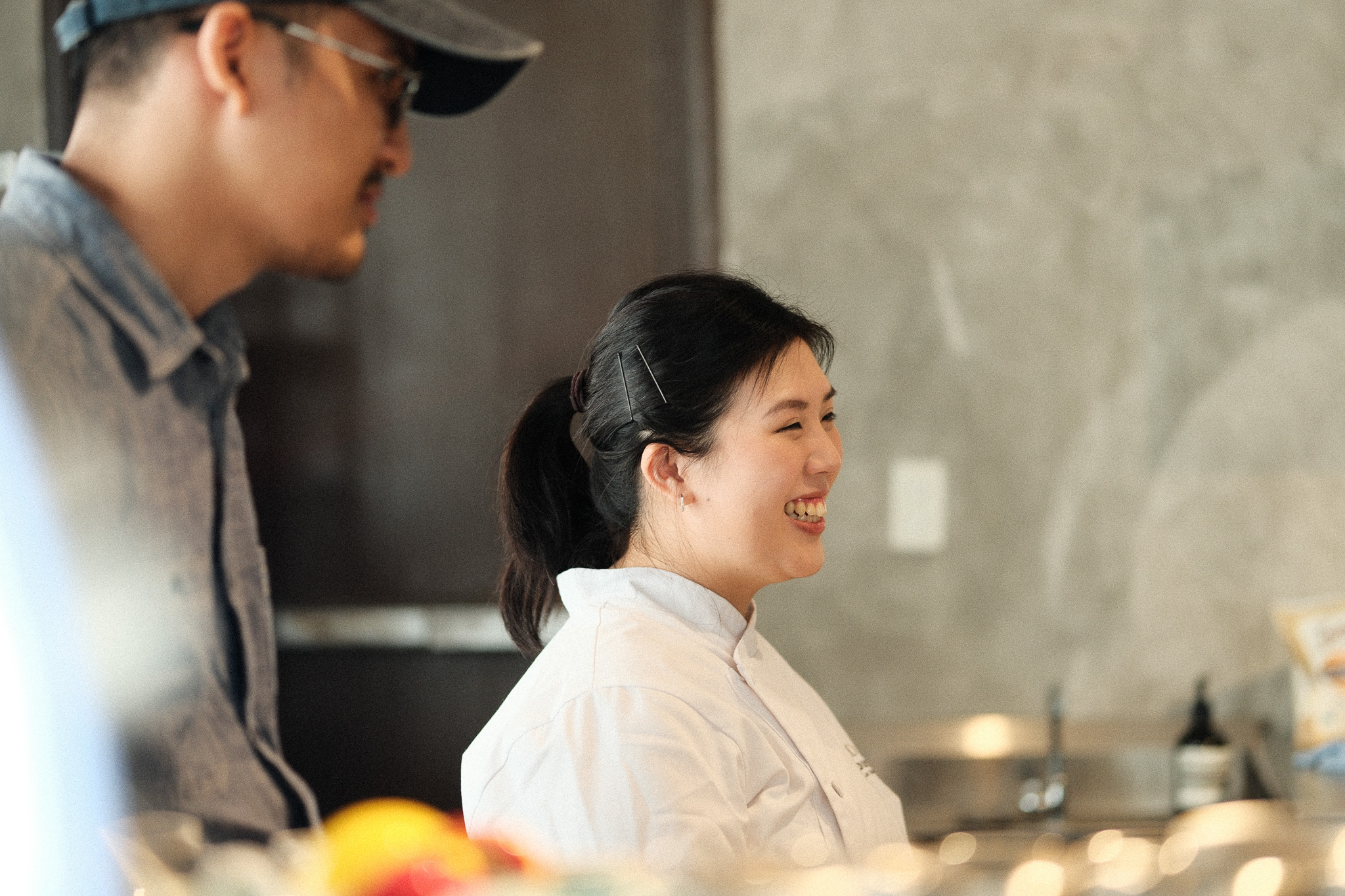 Keona Liuson, Now Now Sous Chef. Photo by Marco Lazaro
The central philosophy of Now Now is to serve ‘fast food with a slow food backbone.’ Can you expound on this?
Keona Liuson, Now Now Sous Chef. Photo by Marco Lazaro
The central philosophy of Now Now is to serve ‘fast food with a slow food backbone.’ Can you expound on this?
ML: After experiencing countless fine dining concepts as a chef for so many years, I have come to the conclusion that fine dining shouldn’t be the direction of the restaurant industry. There has to be a change, a shift in the trajectory of global food culture. We should focus on food as sustenance while making the food that we eat exciting.
In Now Now, we serve you the food that you want fast because we have prepared the food a week in advance. We use elaborate processes and techniques like fermentation in the preparation of our food.
So in the name Now Now, there is a sense of speed as in fast food but also a sense of urgency in terms of bringing to the foreground the importance of slow food and the health benefits of fermented food in our everyday life.
So you eat your food now, and you get the benefits of slow food now. In our kitchen, we work on cultures. We make our own labne, which is strained yogurt or Greek yogurt. We make our own cream cheese out of milk with yogurt bacteria in it. We also make koji in-house. Koji is a basic ingredient in shoyu, miso, sake, and amazake. We grow our koji from spores and we use koji in our sauces and marinades. In our kitchen, we ferment our fruits and vegetables by using natural bacteria. We also incorporate pickled elements in our food.
In terms of produce, we believe in locavorism. We use produce available in a locality or a region to minimize the carbon footprint and also to ensure freshness. We serve innovative food with the simplest ingredients made better through our own fermentation processes.
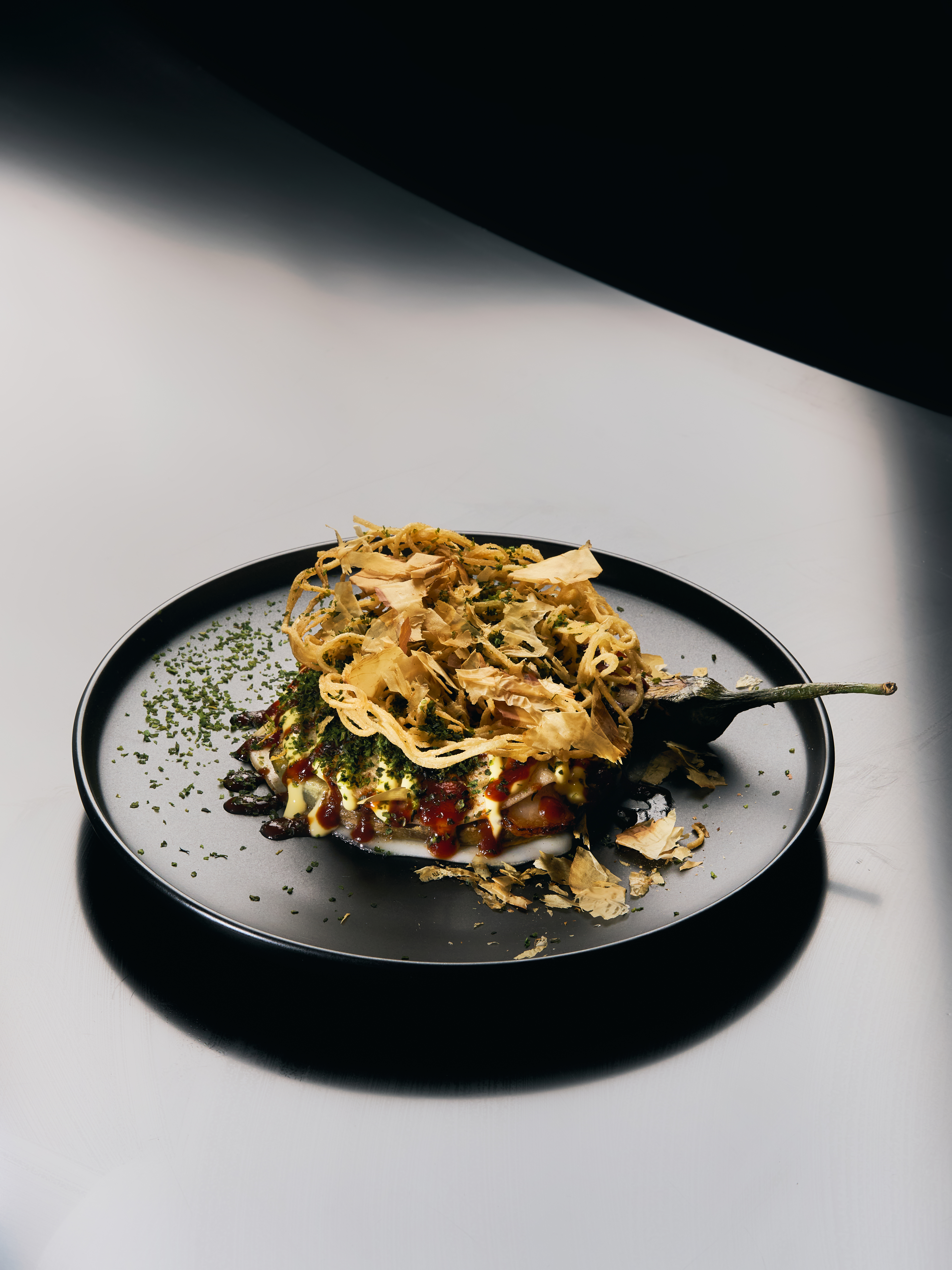 Now Now okonomiyaki x tortang talong is a game-changer. Photo by Renzo Navarro
Now Now okonomiyaki x tortang talong is a game-changer. Photo by Renzo Navarro
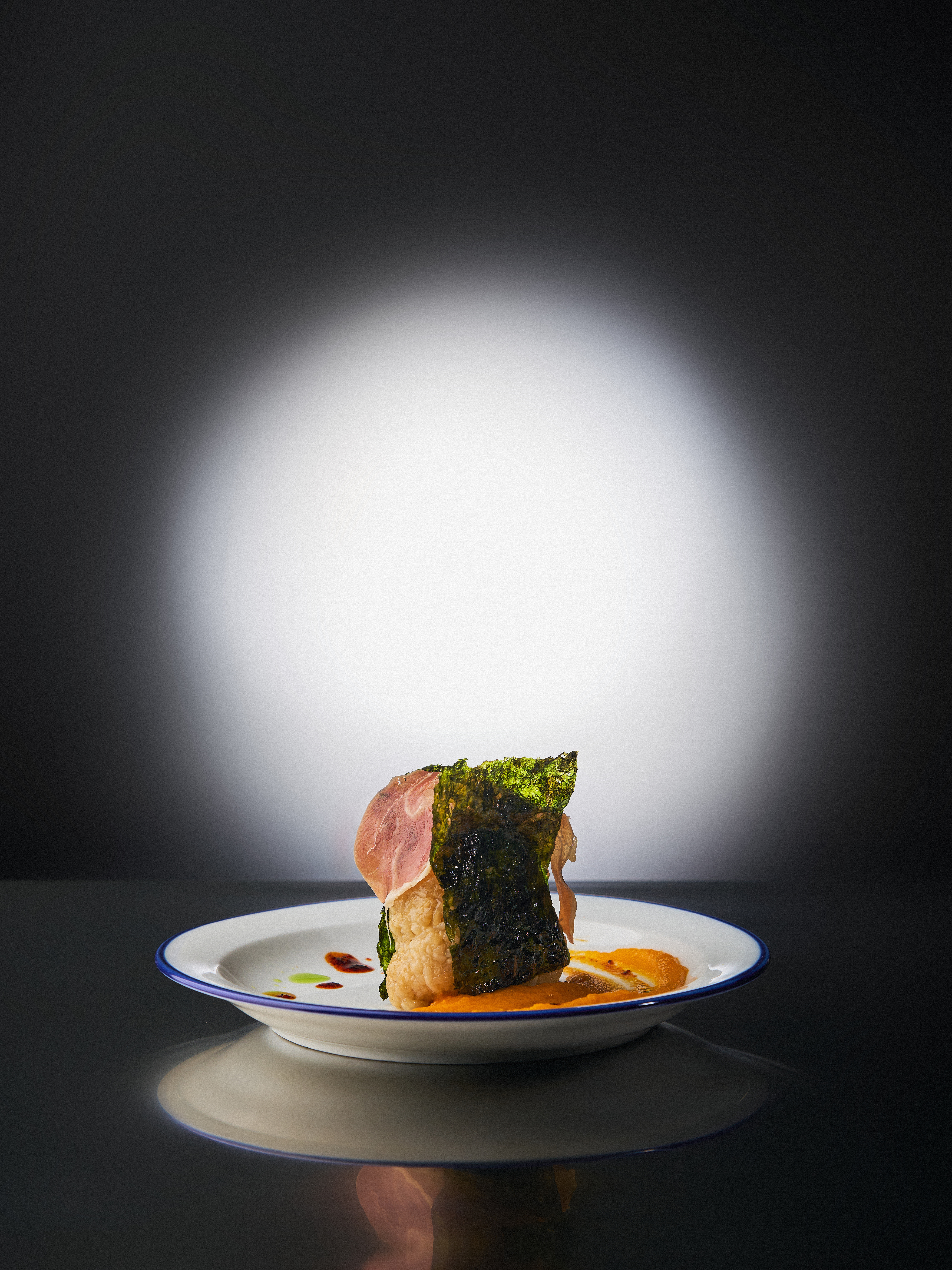 Now Now’s machang with fermented papaya chutney. Photo by Renzo Navarro
Now Now’s machang with fermented papaya chutney. Photo by Renzo Navarro
LL: With climate change and all the crises the world is facing, I believe that Now Now is in the right direction in terms of where global food culture is headed. In Now Now, we use techniques often used in the preparation of high-end meals in fine dining restaurants. We believe in making food accessible to more people.
Consumers today have learned to be more practical in their pursuit of good food. Not only are we using complex techniques, we also incorporate diverse cultural influences in the food that we make.
What is your favorite item on your menu at the moment?ML: It has to be the machang with fermented papaya chutney. It is based on the Chinese-Filipino comfort food machang but it is purposely done wrong. One thing we added to our reimagination of the machang is the fermented papaya chutney in place of the banana ketchup that the Chinese-Filipinos usually use as their go-to condiment.
LL: I love our tortang talong okonomiyaki. I love how this dish pushed the boundaries on what is conventionally considered as an okonomiyaki and a tortang talong.
If the world ends tomorrow, what would you want to have as your final meal on Earth?ML: I would love to have some kartacze as my last meal on earth. It’s a large Polish potato dumpling with meat stuffing.
Lisane: I would love to have again for one last time that truffle gorgonzola arancini sold by a Sicilian immigrant in Barcelona.
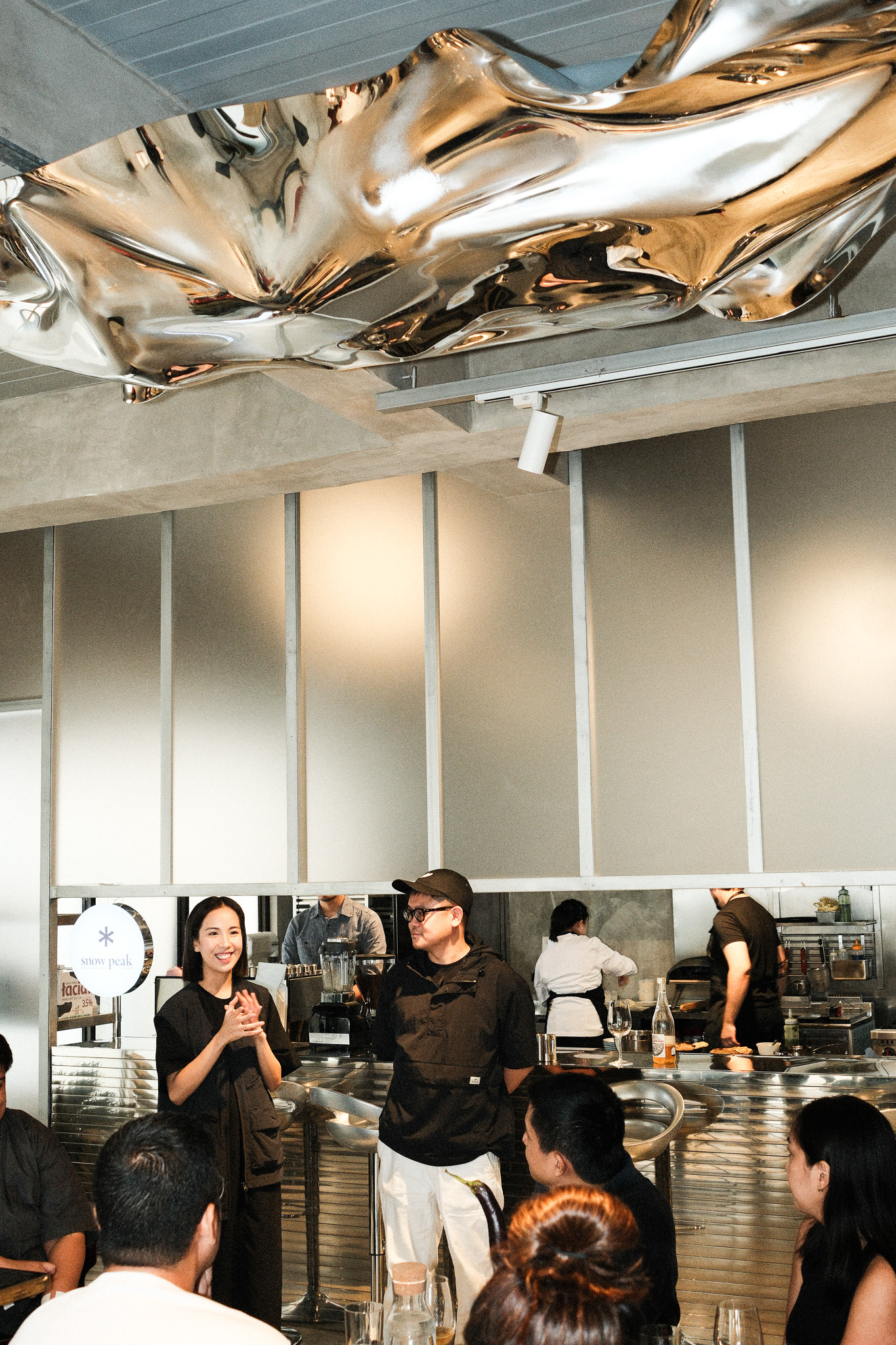 Now Now is where fast food flair meets the science of slow food. Photo by Marco Lazaro
Why are you a culinary artist?
Now Now is where fast food flair meets the science of slow food. Photo by Marco Lazaro
Why are you a culinary artist?
ML: Every place I have traveled to, I took a piece of it in my mind. The places I visited changed me. The local tunes, music, spices, the terrain, everything I have seen, heard, and tasted expanded me and my understanding of the world. It is a subconscious thing but I find myself mixing all these experiences in my head. With all these in me, I can’t help but create and become a culinary artist.
LL: I express my emotions and feelings through food. I make food when I am feeling things. Food is the language of my soul. This is why I am a culinary artist.
Now Now is on soft openingtusk casino, accepting reservations and walk-ins on Fridays, 6 to 10 p.m. and Saturdays and Sundays, 11 a.m. to 3 p.m. and 6 to 10 p.m. The Now Now Canteen is located 497-C Rosa Building, Calbayog corner Esteban St., Mandaluyong City